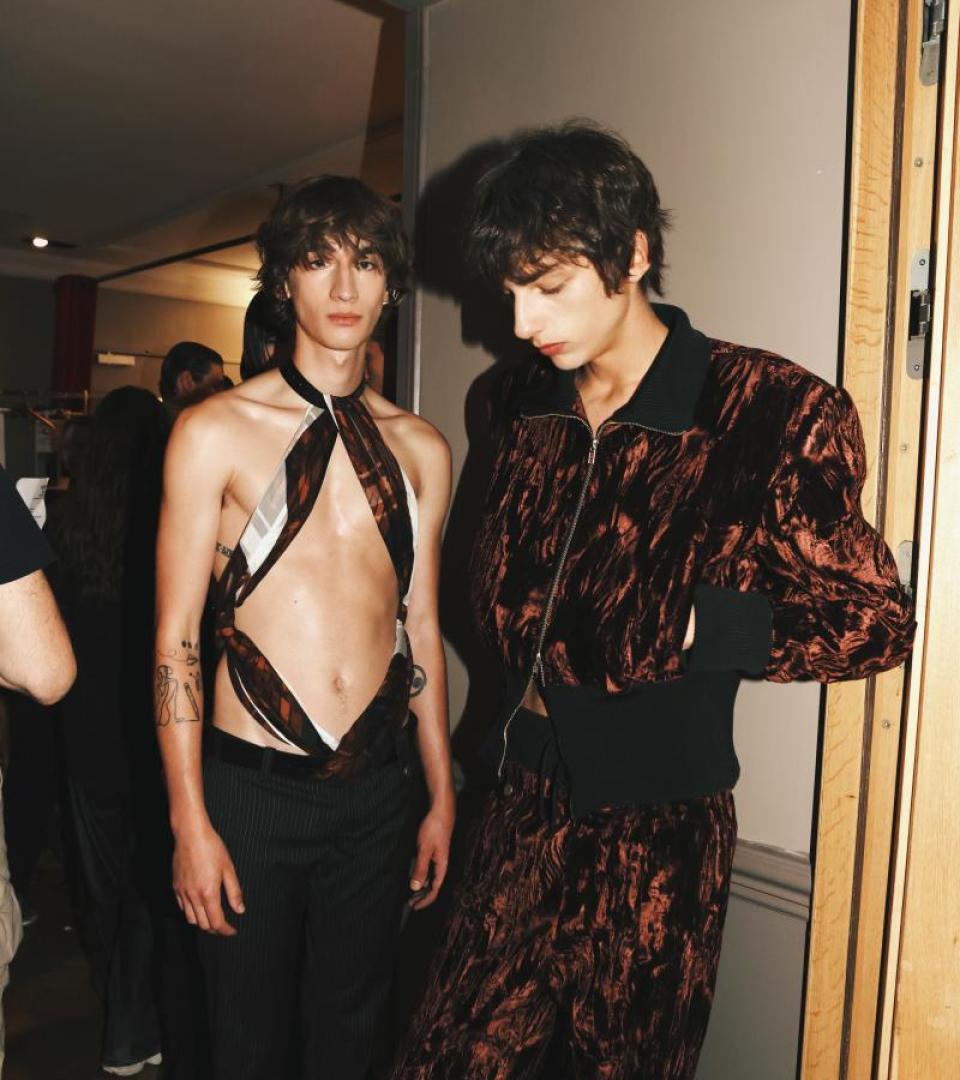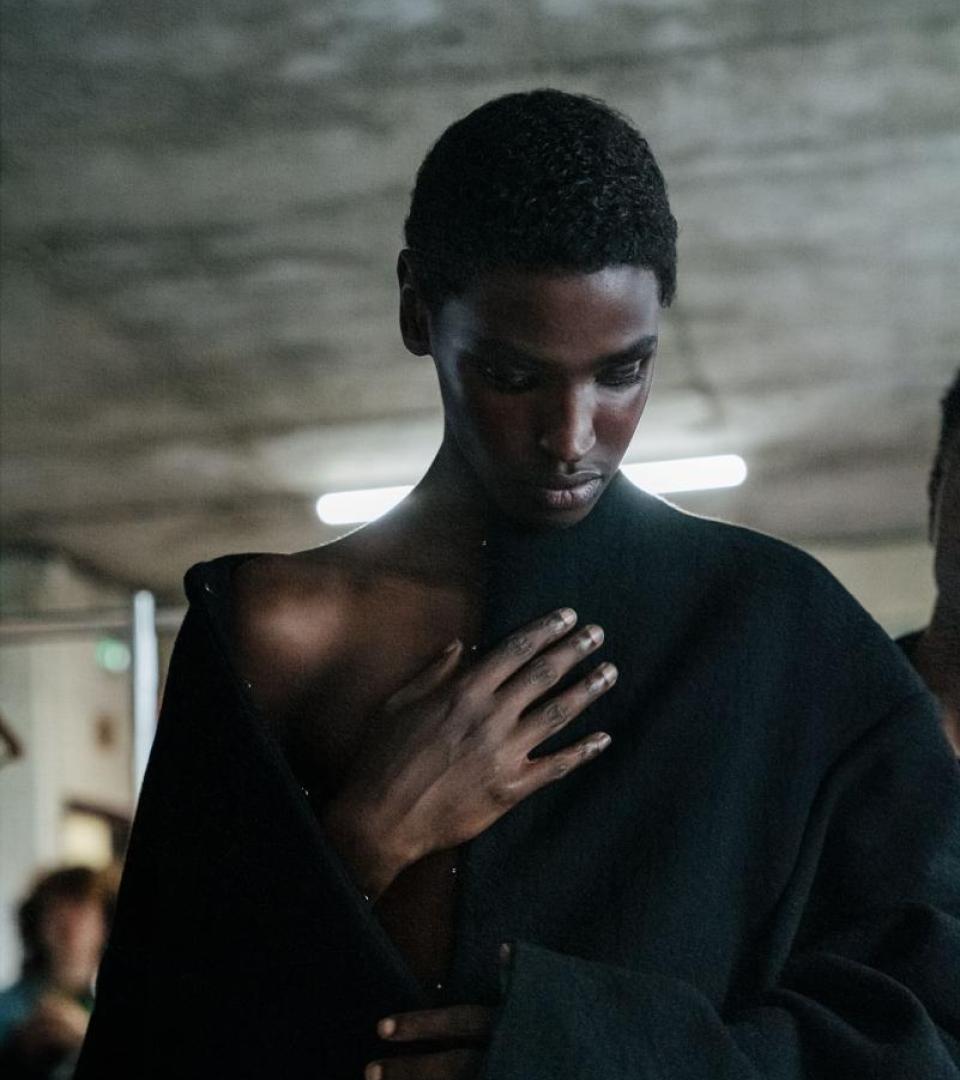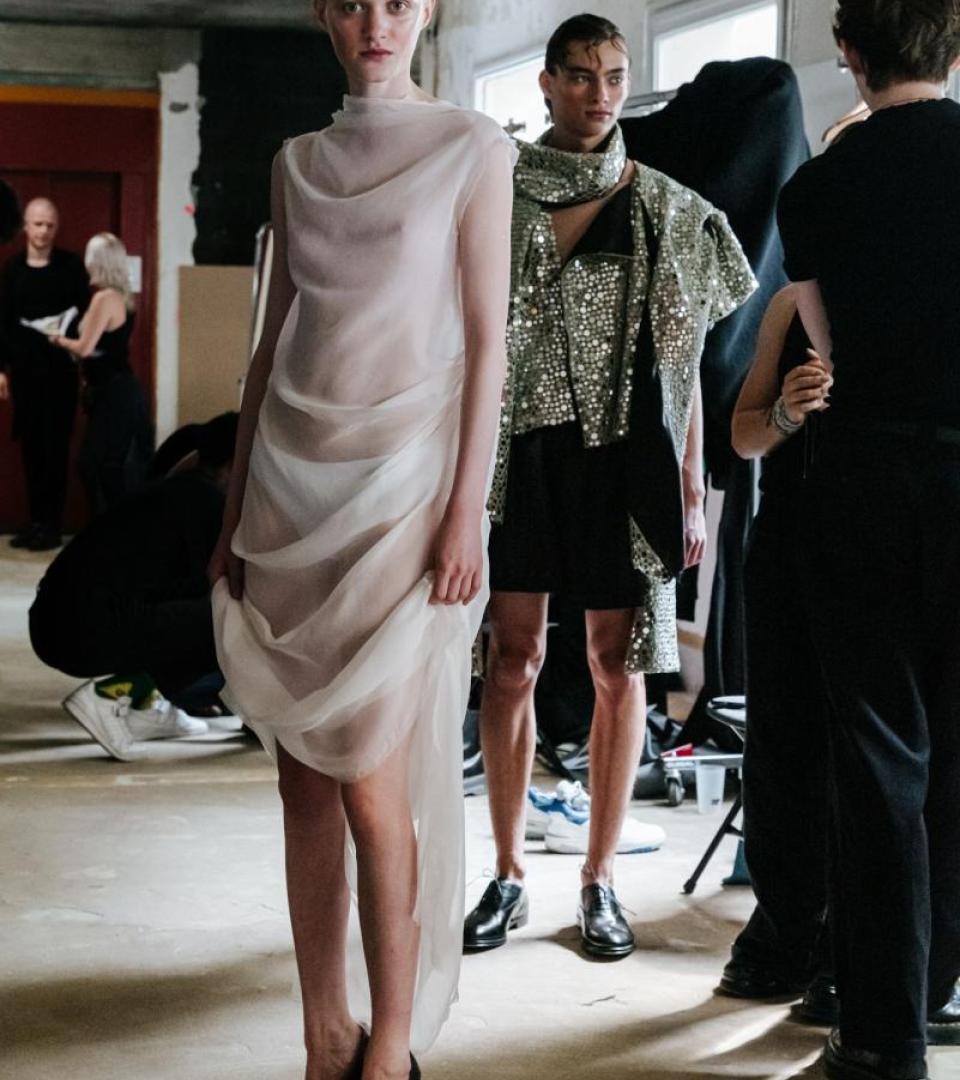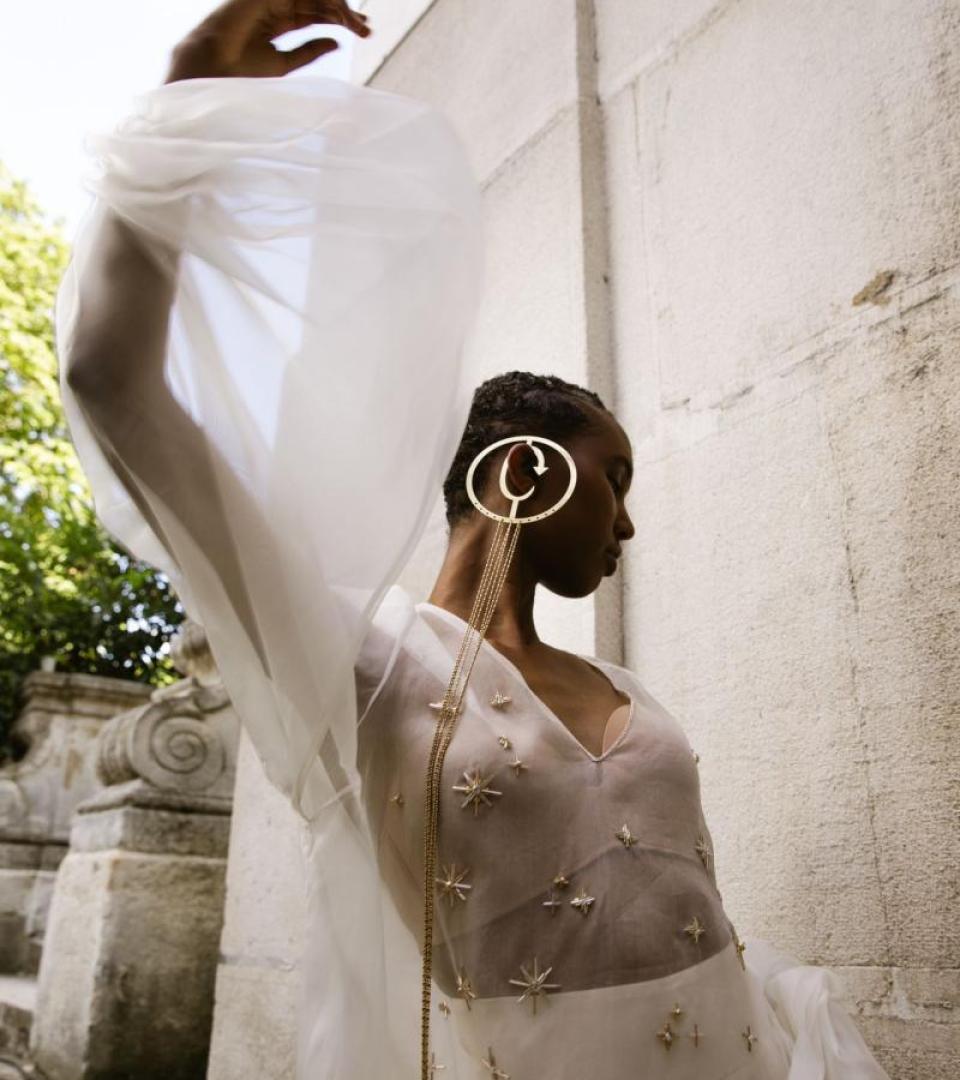Sophie Abriat: “Today, talking about fashion implies addressing a global cultural phenomenon.”
Over the past ten years, journalist Sophie Abriat has been weaving links between fashion, economics, sociology and philosophy. In her book “Danser sur le volcan” (in English: “Dancing on the volcano”) she reveals the ultimate culmination of this journey: a meticulous dissection of the unbridled expansion of the luxury sector, shaping a bubble of insouciance and lightness in a crisis-ridden world. This book is aimed at both the specialist and the curious, “at people who are not familiar with the luxury sector but who wonder about its omnipresence, to give them keys to understanding it.”
Abriat perfectly personifies the luxury sector values she scrutinises: rigour, a flair for rhetoric and storytelling prowess. She began her career studying law at Sciences Po Bordeaux and graduated with a master's degree in intellectual property law, where she discovered “the art of unfolding a thought, which has come in very handy for me later on. But I was attracted to fashion and wanted to discover it from the inside.” She took her first steps at Balmain as a collection assistant, working in the studio, workshop and production. She honed her skills at the Institut Français de la Mode before continuing her career at Iro as a product manager. “I learnt a lot about the product, fabrics, materials and the whole process of making a garment. Still a student, she launched a blog, her own writing space. “I would interview sociologists and philosophers about their relationship with fashion. That wasn't common fifteen years ago, in France at least. It was a way of sharing what I understood about fashion.” She then wrote her first runway show analyses. “Thanks to the blog, I was lucky enough to meet Caroline Rousseau, who was in charge of style at Le Monde at the time, and she offered me the chance to write my first articles.” She went on to write for Madame Figaro, Les Inrocks, i-D France and T – Le Magazine du Temps, but her main platform of expression remained Le Monde.
“Fashion brands were once scorned as cultural players and are now courted. As a fashion journalist, I'm pleased to witness this shift.”
Fashion has not been classified as one of the nine major arts since the 20th century. And yet fashion implies creativity, aesthetics and a potential to reflect cultural, economic and social movements. To exclude it from art because of its utilitarian and commercial functions would be a relic of the same contempt that excluded fashion from academic research for too long. “Fashion is an industry, but it is also a medium of expression. There are two levels of perception.” This distinction, commonly accepted for cinema – “We have no problem distinguishing the Hollywood industry from a film as a cultural object” - has long been denied to fashion, whose products were seen as mere objects, superficial. That said, a painting could be defined as a simple means of dressing up an empty wall, or a sculpture could end up in the corner of a room, reduced to the function of a coat rack. And let's not forget that we're talking here about creative fashion, about exceptional pieces, and not about molten plastic agglomerated in the form of jackets or shirts produced in ecologically and morally unacceptable conditions.
In January 2023, the Musée d'Orsay acquired “Partie de bateau”, dated 1877-1878, by Gustave Caillebotte (1848-1894). A smartly dressed man wearing a top hat, rowing on the Yerres, south-east of Paris, estimated at 43 million euros. “At the time, the museum's acquisition budget was capped at €3 million. So, without the exclusive sponsorship of LVMH, the museum would have great difficulty acquiring this artwork.” We are witnessing a shift in the field of art, traditionally steered by the public sector, towards private bodies. “The economic and cultural power of luxury houses results in part from their financial capital. On the other hand, one might ask whether the State should be the 100% owner of culture. There are limits to every system.”
“Brands have come to understand that one of their missions is to cultivate us.”
“The industry is no longer just looking to sponsor culture, to be a patron of the arts but to be a cultural platform in its own right. In particular, brands now have their own foundations and organise major exhibitions.” The Fondation Louis Vuitton has provided access to works by the greatest masters such as Claude Monet, Mark Rothko, Cindy Sherman and David Hockney, whose retrospective will be on show from 9 April 2025 to 1 September 2025. The Fondation Pinault - Bourse de Commerce, which is presenting the exhibition “Corps et Âme” (Body and Soul) until 25 August 2025, “brings together 10,000 works of art and a top-class cultural programme.” Abriat's observation is clear: luxury has become a cultural player in its own right. “Because of their financial capital, these companies and groups are also able to attract the best curators and experts. We are witnessing the emergence of new cultural centres, third hybrid spaces.”
Fashion creates its museums, and museums embrace fashion. Last year at the Centre Pompidou, Laurence Benaïm paired the works of Chanel, Iris Van Herpen or Martin Margiela with those of Francis Picabia, Marc Chagall or Théodore Géricault. The Louvre, the Paris-based absolute temple of French and international culture, is presenting its “Louvre Couture” exhibition, conscientiously interspersing fashion objects with its masterpieces. And these encounters attract a much younger audience. Via social media, we are staging our everyday lives and therefore our relationship with art. “We perform our intellect by sharing the exhibitions we have attended, the books we have read and the films we have seen. We're making our own cultural capital transparent, and we're only at the beginning of this transformation.” The whole phenomenon of the instagramming of our daily lives is making it possible to reach targets that are more connected and statistically younger, for whom luxury items are objects of desire at an increasingly early age. The notorious Gen-Z, born in 1997, and generation Alpha, born in 2010, “are currently making their first luxury purchases at the age of 14 or 15. This was not the case with previous generations. We wanted less what we couldn't see.” This extension of luxury into the realm of art can be seen in a tentacular way in other sectors, including gastronomy, hotels and sport: “Luxury thrives on horizontality by associating itself with other sectors. Luxury + gastronomy, luxury + music, luxury + Formula 1: this creates incredibly powerful multiplier factors.”
“A luxury product is one that sells for more than its intrinsic value. And in that price, of course, there is that intangible, magical element which is linked to desirability.”
“The term desirability is used a lot in brand communications, because today brands are creators of desire.” And this impalpable element is ultimately down to their heritage, their know-how, and their artistic directors. “Mathieu Blazy, who is about to start at Chanel, Pieter Mulier at Alaïa, Jonathan Anderson who recently left Loewe: these are personalities with an absolutely phenomenal knowledge of the history of art, fashion and design. You have to be an artist to capture the zeitgeist, the current mood, and express it in the way they do.”
Beyond a meticulous overview of brand initiatives in the last few years, Abriat presents a theoretical essay with precise academic references. In particular, she recalls the analysis by Pierre Bourdieu and Yvette Delsaut entitled “The couturier and his label: a contribution to a theory of magic” (1975), who demonstrate how the name of a fashion designer, his or her “label” becomes a powerful symbolic tool, conferring an almost magical value on objects that would otherwise be mere material products. They explain that this transformation takes place through a system of collective beliefs, in which the designer's name embodies excellence, thus influencing the perception and value attributed to luxury goods.
“There's a narrative deficit in our society, and brands are taking up the slack left by other players.”
“Brands provide a key value, which is that of insouciance, a cardinal value that is in short supply in our time,” in a context of widespread anxiety. And the title of this book, “Dancing on the Volcano” expresses “the possibility of escaping from anxieties of the world.” Admittedly, this is a cutting-edge fashion reference as we like them, since it's taken from a quote by the highly gifted Loïc Prigent interviewed by journalist Séverine Saad for Le Temps, himself referring to the front page of New York Magazine dated November 30, 1987, headlined “Dancing on the Lip of the Volcano” and subtitled “Lacroix's crash chic”. The magazine's cover was illustrated with a photo of Christian Lacroix surrounded by models, shortly after the designer's first New York show. The formula, albeit sublime, captures the core question that Abriat both exposes and deconstructs. “It's a sector that's doing well while the world is hurting. As I explain throughout the book, fashion is a paradox. Ephemeral and cyclical, it anchors us in the present and embraces us outside our own condition.” This book goes beyond fashion as we usually understand it. It questions our daily lives and consumption patterns. And it puts fashion in its proper place - everywhere, even among those who still despise it.
“Paris is a brand and attracts all kinds of talent. And increasingly so.”
The capital has been home to artists from Azzedine Alaïa to Kenzo Takada, Junko Shimada and Paco Rabanne, to name but a handful. The legally protected appellation “Haute Couture” is a French exception. And then there are the groups and the brands. “I think it's the strength and influence of these major French groups, based in Paris, that creates an attractiveness and legitimacy” and make Paris the undisputed capital of fashion, becoming a brand in its own right. “Fashion is the Silicon Valley of France,” asserted Ralph Toledano - a central figure in French fashion and president of the Fédération de la Haute Couture et de la Mode from 2014 to 2022 - in an interview with Madame Figaro in 2016. And that's how Abriat addressed her publisher, illustrating her point with figures. “When I show the share of luxury goods in the CAC40, people are generally struck. I realised that few people knew about these results, even though it's our main industry. We don't say that enough: It's our major industry.”
“Luxury brands have become holistic systems with a ubiquitous presence. They are total, global players. Today, when we talk about fashion, we're not just talking about ready-to-wear and accessories, but about global cultural influence,” sums up Abriat. The author, who has met the geniuses of this sector, from Hussein Chalayan to Rei Kawakubo, carries on with her in-depth analysis, like a never-ending unravelling of an industry of excellence in sprawling expansion.
Reuben Attia



